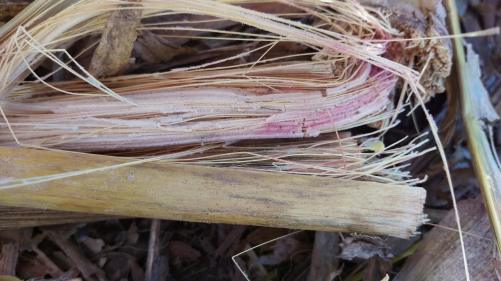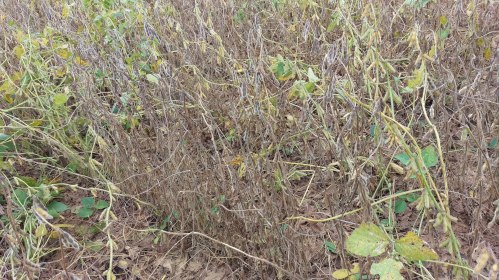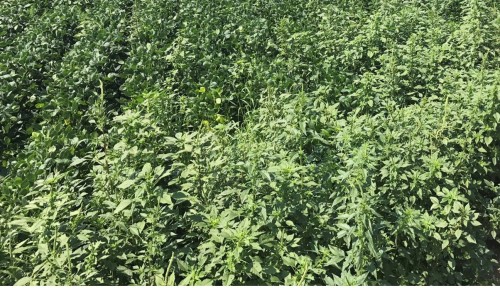Upcoming events:
Sept. 24: Beef Quality Assurance, 5:00-7:00 p.m. Jefferson County 4-H Building, RSVP: kristen.ulmer@unl.edu
Sept. 25: Beef Quality Assurance, 2:00-4:00 p.m. Tecumseh Community Building, RSVP: kristen.ulmer@unl.edu
Sept. 25: Beef Quality Assurance, 7:00-9:00 p.m. Nebraska Extension in Saunders County Office, RSVP: kristen.ulmer@unl.edu
Great to see many farm families at Husker Harvest Days last week and also great to see harvest getting started! Just a reminder for all of us to watch for equipment on the roads and allow for extra time to slow down, particularly with the speed limit changes. Dawn, dusk, and the evening can be the hardest times to see equipment and it can be difficult to see how wide or long the equipment extends. Harvest is hard work and a lot of hours yet is also a blessing to finish the growing season. Here’s wishing everyone a safe harvest season!
Harvest: As storm and drought-damaged corn is being harvested, just a reminder that grain should be tested for presence of ear molds and any potential mycotoxins now in addition to moisture/test weight. I’m hearing some differences in what’s all being tested when the harvest sample is taken, so be sure to talk to your insurance agent about this. It’s important to also test for mold and potential mycotoxins as that gives you an indication of what’s in the grain, particularly if any grain is going into the bin. We’d recommend not binning the worst damaged fields/areas of fields, particularly if you have a lot of diplodia in the field. Drying grain to 14% moisture as quickly as possible will stop most fungal growth and we recommend drying to 13% if diplodia is an issue in your corn ears. I’m also consistently hearing about light test weights in the storm damaged grain.
Rapid crop dry down has been a topic of conversation; I’ll share more next week. Briefly, grain moisture loss occurs when husks lose their color, when portions of the ear are exposed above the husk, with looser husks around the ears, when ears turn down, and when there’s fewer and thinner husk leaves. For those asking about dying patches in soybean fields (in which pods are not filling seeds), I’m consistently finding anthracnose in samples but am unsure it’s always been the cause. The concern with rapid dry down in corn is just how quickly these plants are cannibalizing stalks to keep filling ears, the amount of stalk rot in fields, and large ears (watch for potential weakened ear shanks due to various stresses). I test for stalk rot using a pinch test where I pinch the internode between the lower plant nodes for 20 plants and determine a percentage throughout portions of fields. Consider harvesting fields with higher amounts of stalk rot/weakened ear shanks first and also consider harvesting at higher moisture. I’m finding stalk quality quickly deteriorating, even in non-storm damaged fields.
For those with palmer amaranth on field edges, just a reminder that 99% of the seed is still viable going through that combine. Thus, the combine is one of the best ways of spreading palmer throughout your field and from field to field. My recommendation from observing palmer spread the past five years is to avoid combining field edges, strips, or patches where palmer is an issue. Instead, disk down the field edges to bury the seed and then plant an inexpensive small grain like bin-run wheat to reduce early germination next spring. Some have also planted rye. I don’t know if shredding vs. one-time disking is as effective this time of year (since palmer shoots seed heads at the soil line too but unsure if if produces viable seed past mid-September here). As I’ve spoken during pesticide trainings and other meetings, farmers have also shared their experiences. Some farmers shared they took this advice and reduced the problem the successive year and didn’t spread it through their fields (even if they were no-till farmers and had to till the field edges one time). I’ve had other farmers share they combined that field edge or patch and could tell the following year exactly where the combine went for the first few passes within the field as the palmer was a problem there. So, just another consideration as it takes a system’s approach for everything we do including weed management; palmer management begins right now with harvest.
Another management consideration is to harvest soybeans as close to 13% (the elevator standard) as possible. And, I realize this is easier for me to write about than to actually do depending on many factors! Soybeans delivered below or above 13% moisture lose potential profit. At greater than 13% moisture, there is a moisture dock on the scale ticket for delivering wet beans, resulting in a lower price per bushel. And with less than 13% moisture, profit is lost because there are fewer “bushels” to sell rather than a dockage on the ticket. There are fewer bushels because the load weight is divided by 60 pounds per bushel (assuming 13% moisture) rather than by the actual pounds per bushel for the moisture content of the beans at the time of delivery. If you sell soybeans at 8% moisture, you’re losing about 5.43% of your yield; at 9% moisture, it’s 4.4%; at 10% moisture, 3.3%; at 11% moisture, 2.25%; and at 12% moisture, it’s 1.14% yield loss. That doesn’t take into account additional risk for shatter losses during harvest. For a field that’s yielding 75 bu/ac, harvesting it at 9% results in selling 3.3 fewer bushels per acre based on weight because you’re not selling the water that you’re entitled to sell if the beans were at 13% moisture. With soybeans priced at $7/bushel, that’s a loss of about $23 per acre (with greater loss when soybean price increases).

Fusarium (white/pink/gray) is the primary ear mold on this hail-damaged ear with Pennicillium (blue-green) as secondary.

Gibberella stalk rot (related to Fusarium and looks similar). Gibberella is characterized by breakage at the node with pink discoloration within the pith tissue and black fungal structures (not clear in this photo) on the outside of the stalk node.

Seeing soybeans dying in patches like this in a number of fields where early death led to reduced pod fill. Finding anthracnose on stems but unsure it’s always the cause. Not always finding phytophthora or sudden death syndrome either in these patches.

Palmer amaranth is often observed along field edges. Consider not running the combine through edges or patches with palmer to help avoid spreading it throughout your field.


































